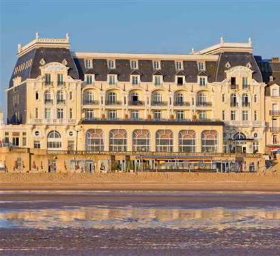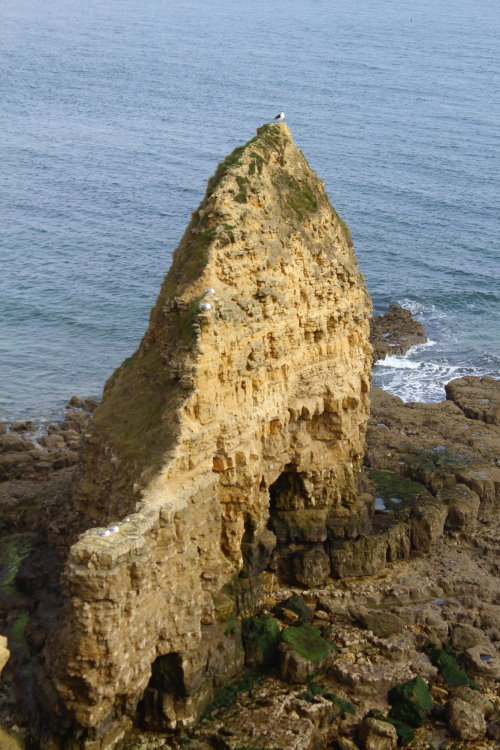D-Day beaches map. Normandy map

Locate D-Day Beaches, 250km from Paris by A13, on France map: from west to east, Utah Beach, Omaha Beach, Gold Beach, Juno Beach and Sword Beach. Arromanches, Pointe du Hoc and the American Cemetery are other moving D-Day sights. June 6 2024 marks the 80th anniversary year of D-Day. Relive the heroic fights of D-Day. There are easy one day bus tour from Paris to Normandy Beaches. Map France. Discover the most famous places in France.
D-Day beaches map
Normandy Beach resort hotel
The prestigious 5-star Grand Hotel in Cabourg, where writer Marcel Proust once lived, is located directly on the seafront in Cabourg. It offers stylish guestrooms, some with views of the sea, a gourmet restaurant, a bar and access to a private beach. A Grand Buffet with music is served each morning at Le Grand Hotel Cabourg. The restaurant offers a panoramic view of the sea and serves gourmet regional dishes.
Cabourg 14390 France

The Grand Hotel in Cabourg is on the beach
Normandy Beaches tour from Paris
In one day from Paris, visit the famous Normandy beaches on a coach tour. This popular tour helps relive the important hours of D-Day landing in 1944. You will see Pointe du Hoc, the American Cemetery of Saint Laurent, Omaha Beach, Arromanches, the Caen Memorial. Various tour options.
On June 6, 1944, known as D-Day, the Allies opened a new European front against the Third Reich during the Second World War. It was the largest military operation in history, which marked the beginning of the Battle of Normandy and would lead to the end of the Second World War.

Normandy beaches are beautiful
Pointe du Hoc
Located between Omaha Beach and Utah Beach, Pointe du Hoc is one of the key heritage sites along D-Day Landing beaches in Normandy. Pointe du Hoc, a strategic element of the Atlantic Wall, was stormed by Colonel Rudder's Rangers on the morning of the 6th of June 1944 - D-Day. it proved to be one of the toughest battles to be fought during the Normandy Landings: of the 225 Rangers that began the assault, only 90 were still fit to continue their fight for France's Liberation. The scars of the battle can still be seen to this very day. During your visit, you will discover an artillery battery, complete with its firing command post, casemates, shelters. Information panels on site.
"At dawn, on the morning of the 6th of June, 1944, two hundred and twenty-five Rangers jumped off the British landing craft and ran to the bottom of these cliffs. Their mission was one of the most difficult and daring of the invasion: to climb these sheer and desolate cliffs and take out the enemy guns." Ronald Reagan Pointe du Hoc speech.

Pointe du Hoc is a moving sight
Caen Memorial
The idea of a memorial for peace came from the mayor of Caen, Jean-Marie Girault, in 1969. On September 10, 1986, the first 13 stones of the building were laid at the site of the command post of General Richter, commander the 716th German Infantry Division during D-Day and the Battle of Normandy. The building was inaugurated on June 6, 1988 by the French President François Mitterrand in the presence of the heads of state or government of eleven other countries involved in the Battle of Normandy. This "Museum for Peace", originally designed by architect Jacques Millet, brings together a collection of more than 8,000 objects and more than 100,000 documents dealing mainly with the Second World War, mostly in Europe. The permanent exhibition is chronological and thematic. It offers a central place to the holocaust. Caen Memorial facts.
Caen 14050 France

Caen Memorial is the best D-Day museum
D-Day beaches tourism
80 years after D-Day landing in 1944, Normandy is attracting a growing number of visitors related to memory tourism. 94 Normandy beaches D-Day sites attract almost 5 million visitors a year. The first museums were created four or five years after the war. First by Norman collectors who recovered everywhere what the soldiers had left, then were born city museums. As early as 1947, a law promoted the preservation of D-Day memory. Seventy years later, in 2017, Normandy memory tourism attracted 4.67 million visitors, of whom 49% were foreigners, representing 31% of the regional tourist activity. In France, memory sites attract around 20 million visitors each year, according to the government. Among the foreigners visiting the Normandy D-Day sites, in 2017, 20% were British, 15% Dutch, 14% American, 11% German, 10% Belgian. There is a progression of the Germans. At each major anniversary, attendance is peaking: 5.92 million for the 70th anniversary, 5.5 million for the 65th, 5.84 million for the 60th. In 1995, attendance was only 2.9 million people. The most frequented site is the Colleville-sur-Mer American Cemetery: 1 to 2 million visitors come each year to gather among the 9,300 white crosses overlooking the eight kilometers Omaha Beach sandy beach. Then come the German cemetery of La Cambe (450,000 visitors in 2017) and the memorial of Caen (371,752). Pointe du Hoc is also a moving sight.

Among the events, the jumps of hundreds of parachutists in the Channel, in tribute to the Americans dropped over Sainte-Mère-l’Eglise in the night of June 5 to 6, 1944, regularly attract tens of thousands of people.

And the garage sales of military objects attract around the 6th of June thousands of people of different nationalities in this department. Interest in the D-Day dropped in the 1960s and 1970s, but the organization of major international commemorative ceremonies from 1984 accelerated the phenomenon. The 75th anniversary of D-Day landing on June 6th 2019 was no exception with all rooms in Normandy booked long in advance.

The top thematics maps of France
France map
Locate the most famous places in France on France map.
Map of Bordeaux wine region
The map of Bordeaux wine region locates the famous Bordeaux vineyards. Médoc, Saint-Emilion, Graves are especially famous for red wines made of a blend of Cabernet Sauvignon and Merlot. Check our map of Bordeaux wine region
French Riviera map
The French Riviera map locates the top sights of the French Riviera: Antibes, Biot, Cannes, Eze, Menton, Monaco, Nice.
Loire Valley castles map
Locate Loire Valley Castles on Loire Valley castles map: Amboise, Azay le Rideau, Chambord, Cheverny, Chenonceaux.
Somme Battlefields map
Locate Somme Battle sights on Somme battlefields map. The Somme is one hour from Calais, two hours from Paris.
Map of Versailles Palace and Gardens
The map of Versailles Palace and Gardens locates the top sights of the famous Sun King's estate: Hall of Mirrors, Versailles Gardens, the Grand Canal, the Grand Trianon, the Petit Trianon.
Disneyland Paris map
Locate Disneyland Resort on the Disneyland Paris map.